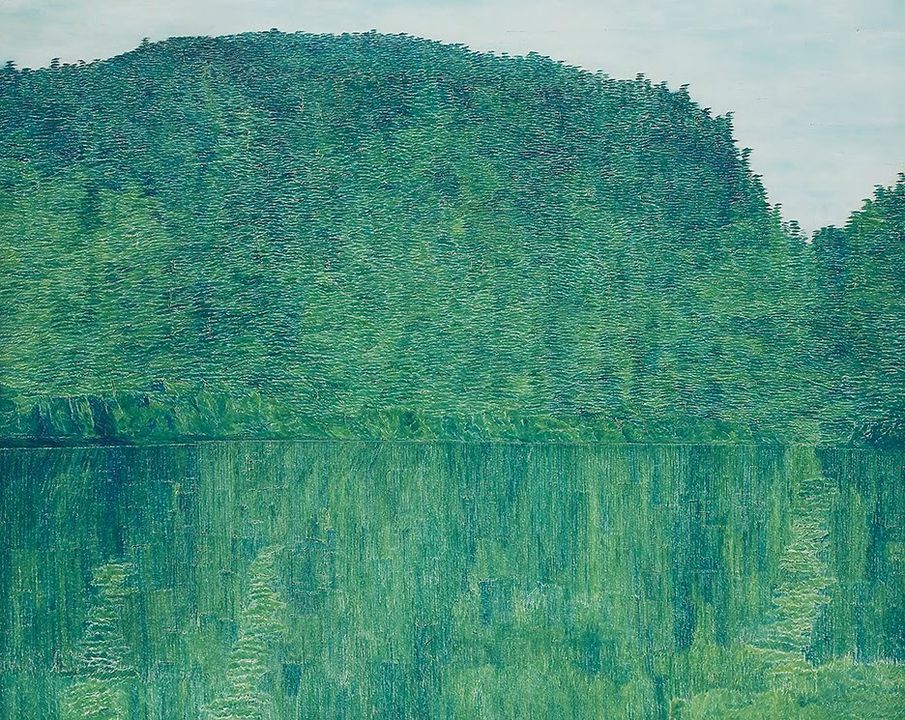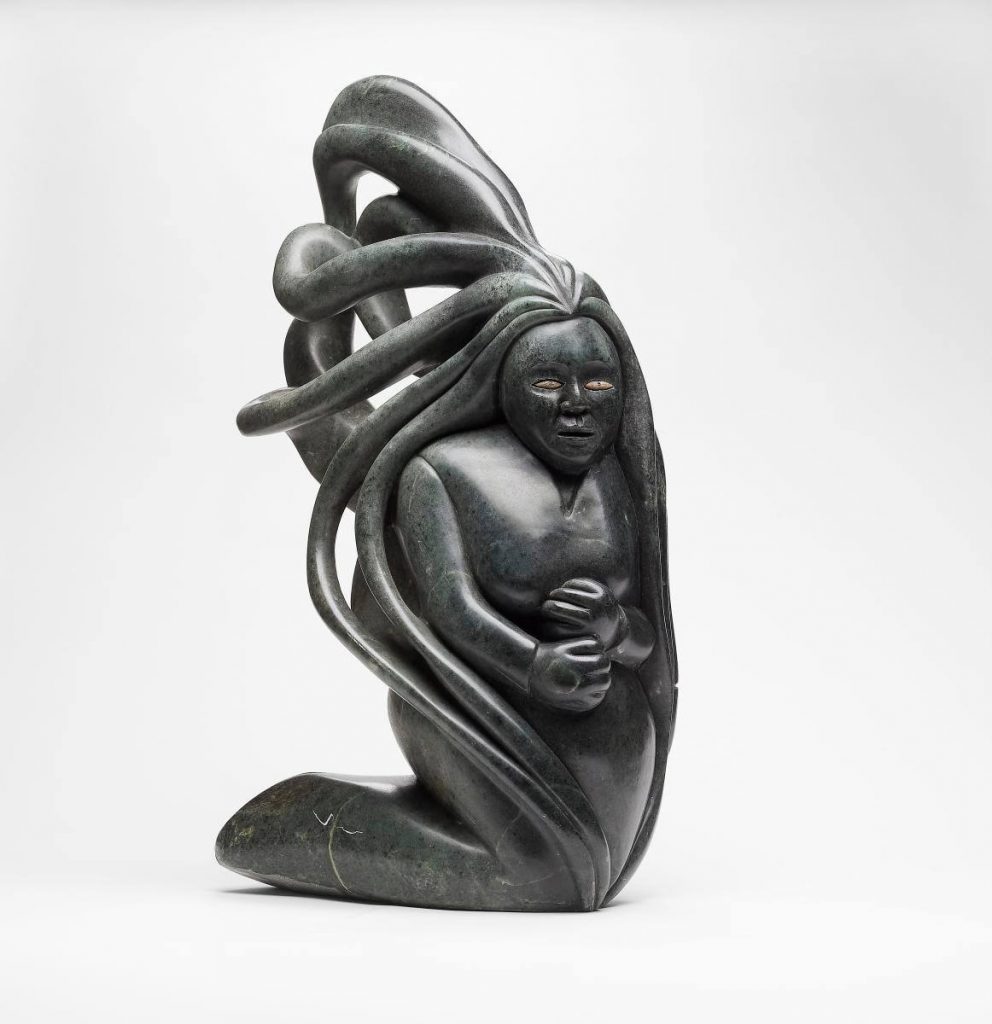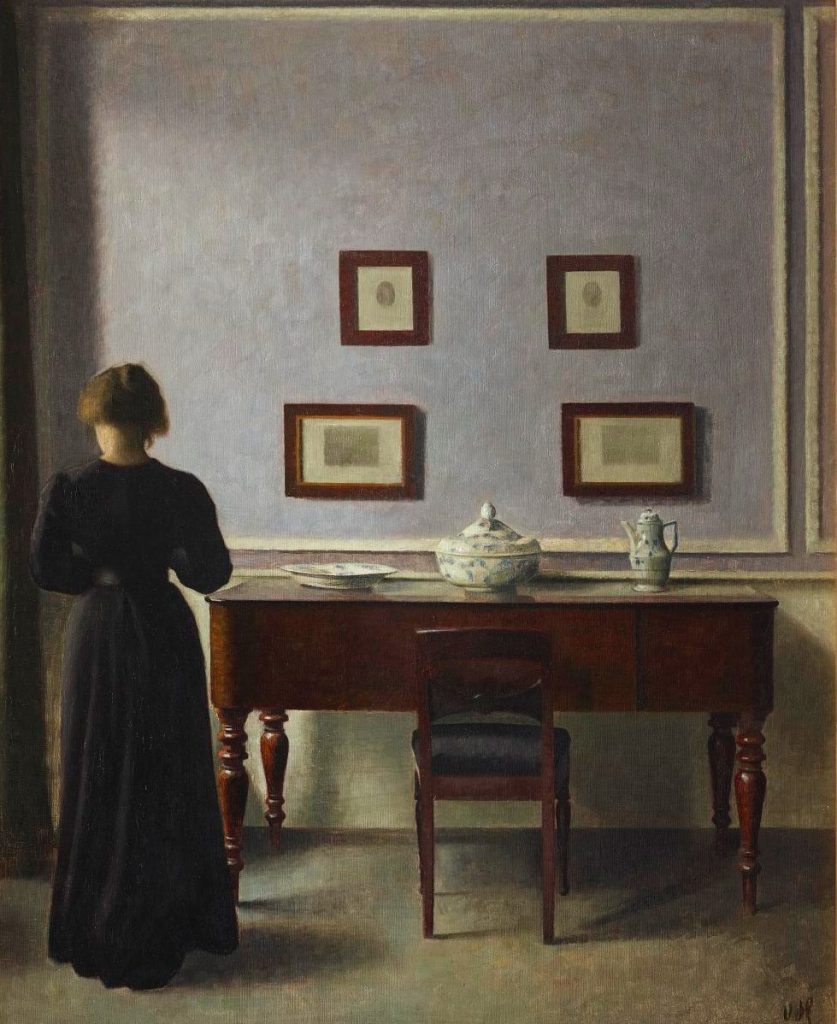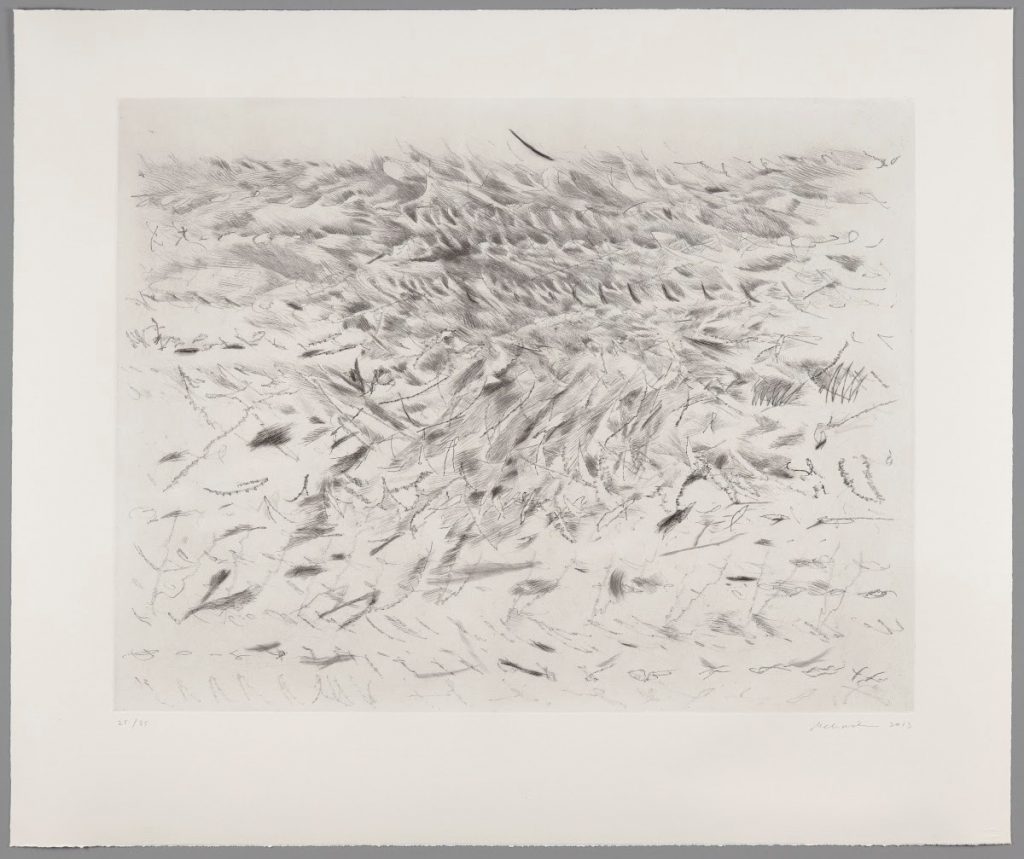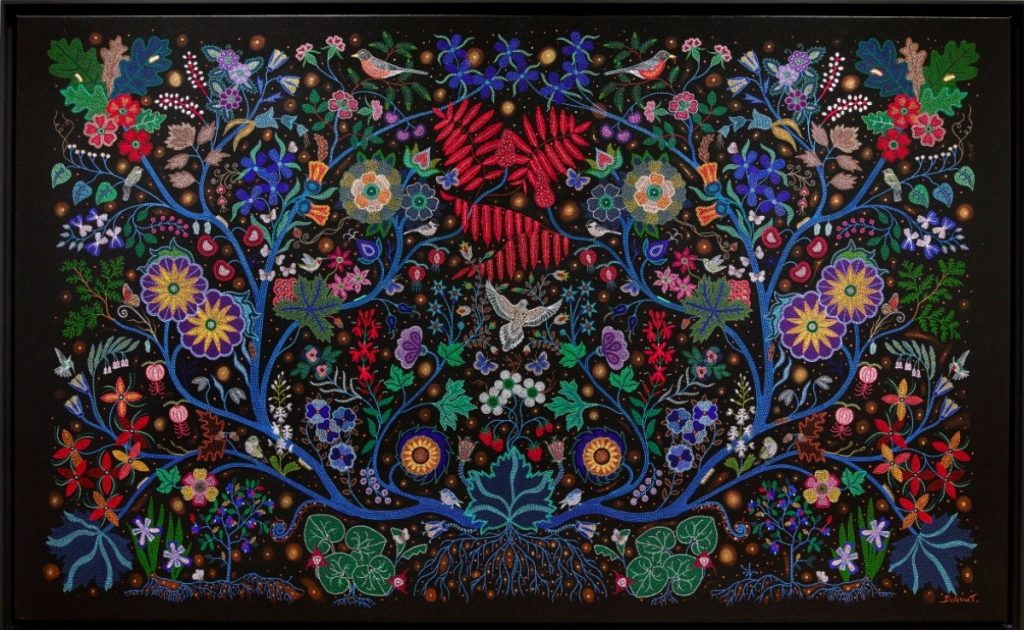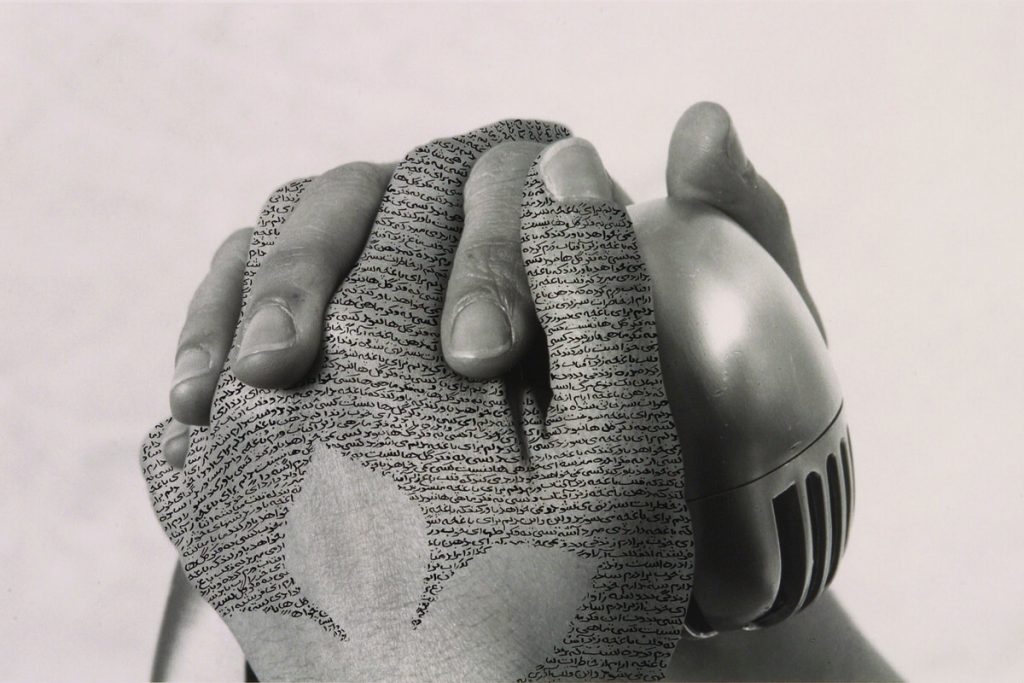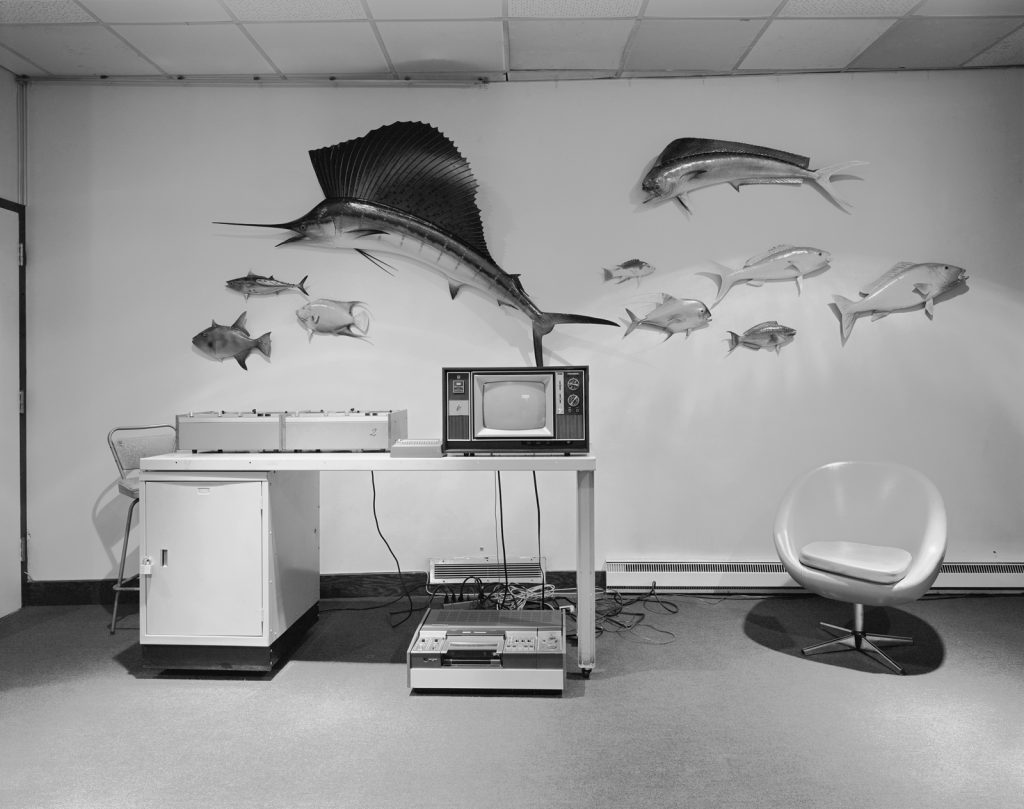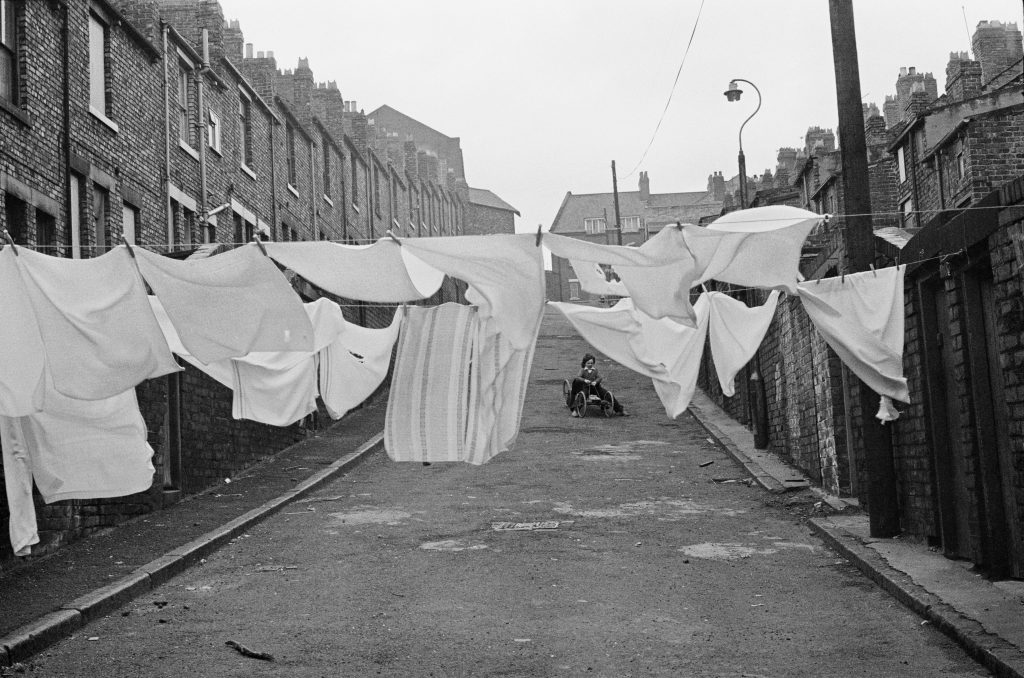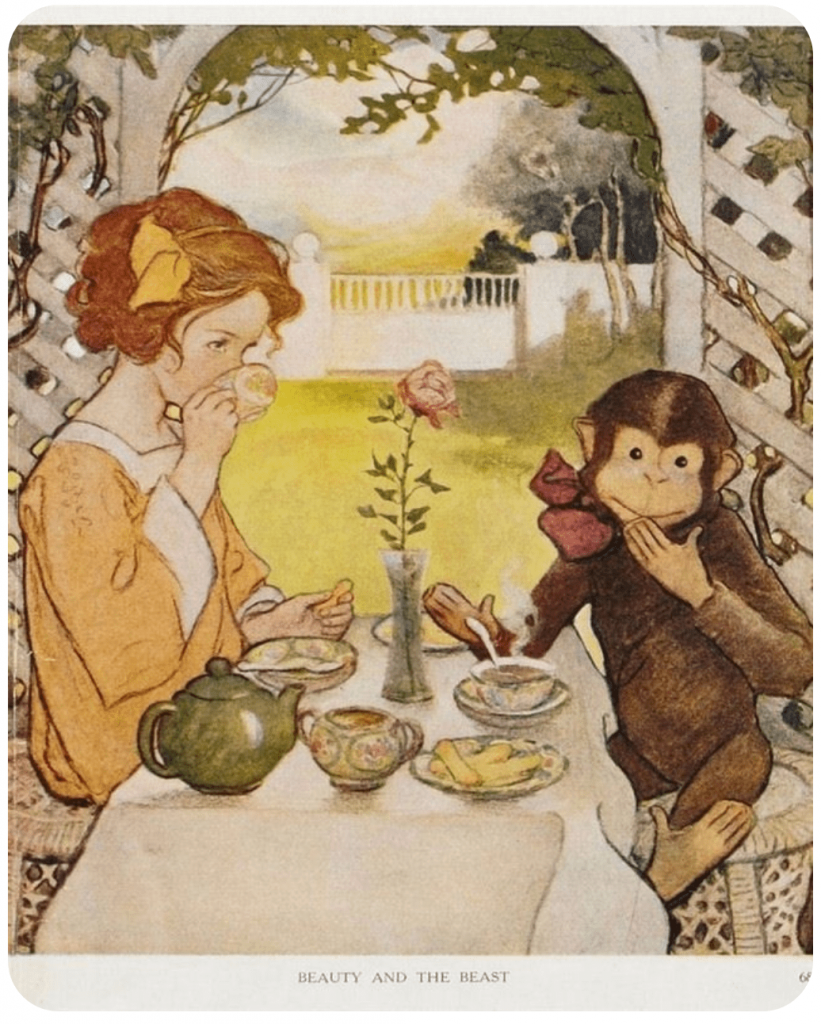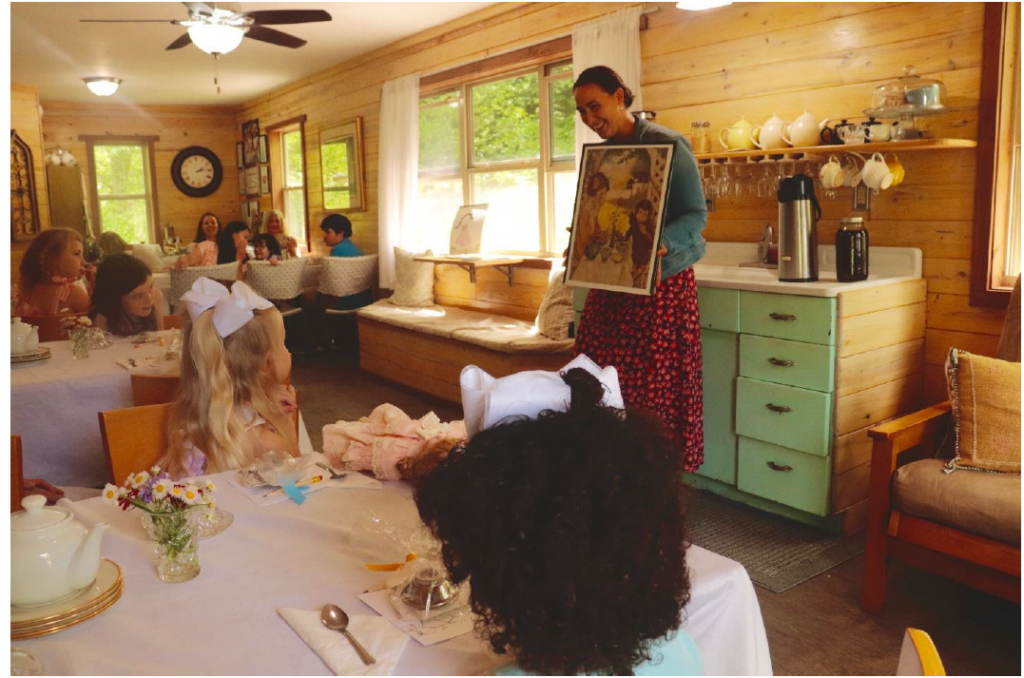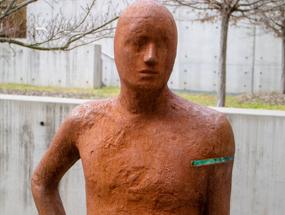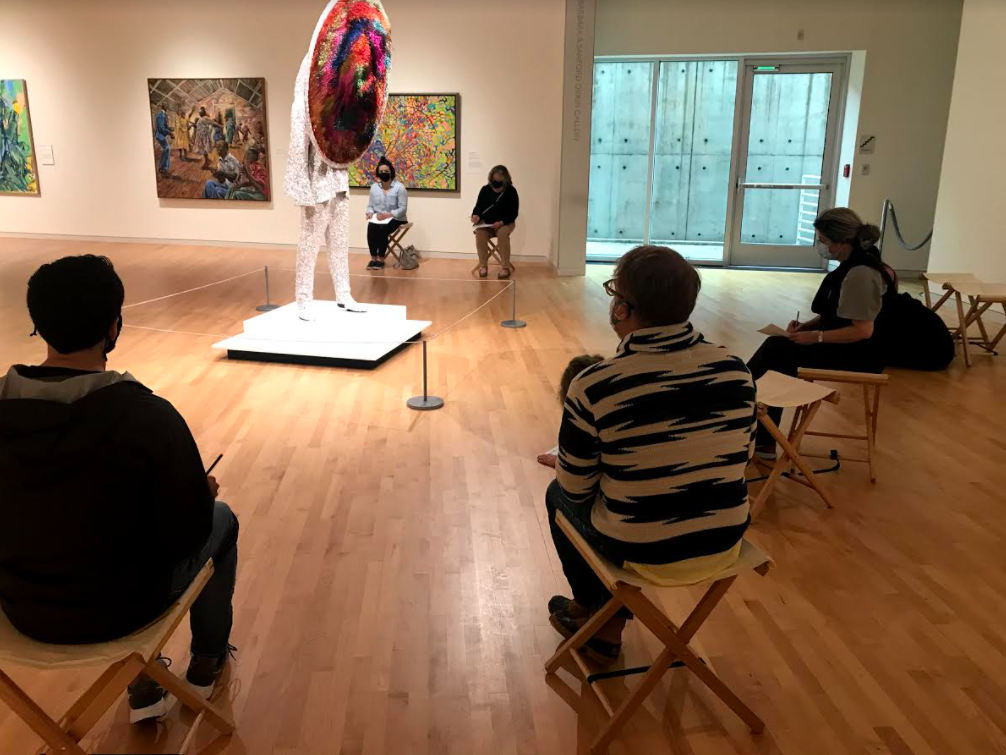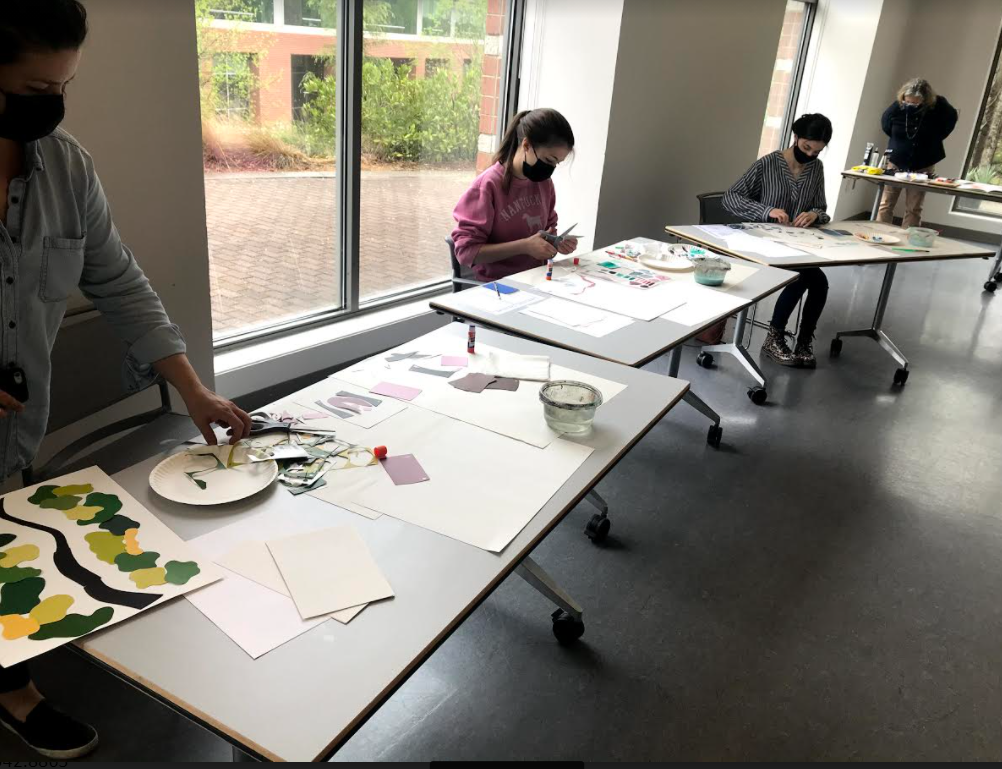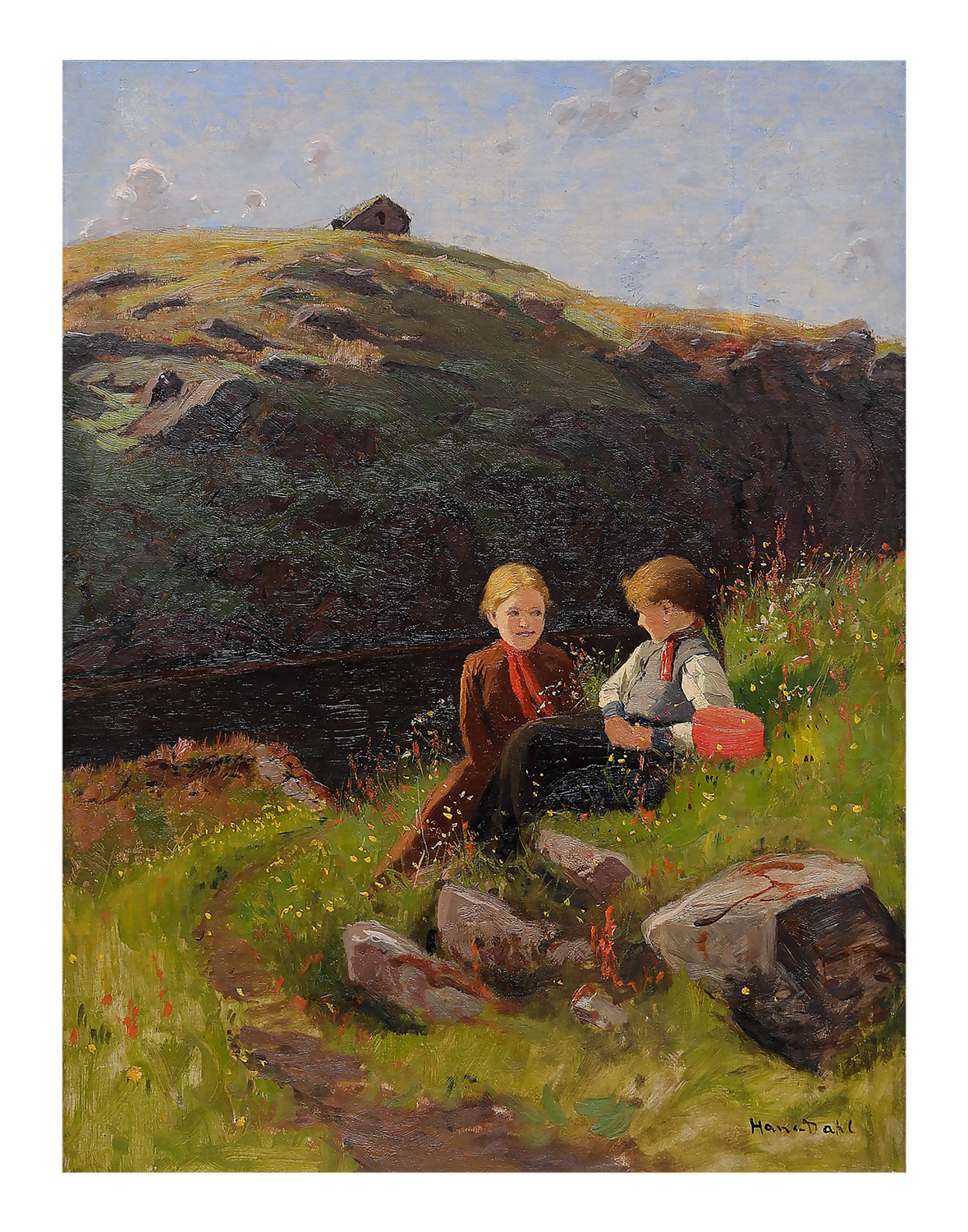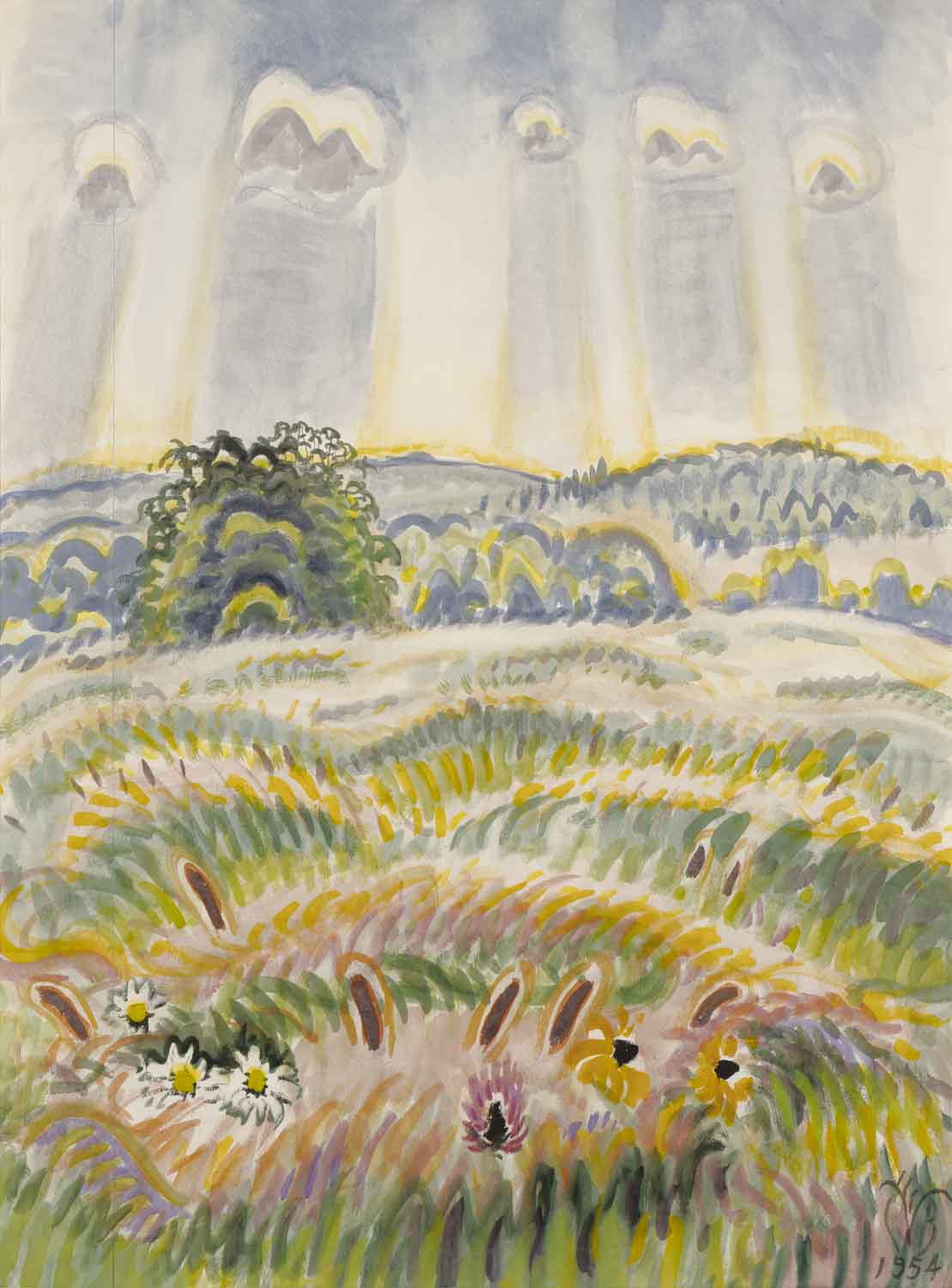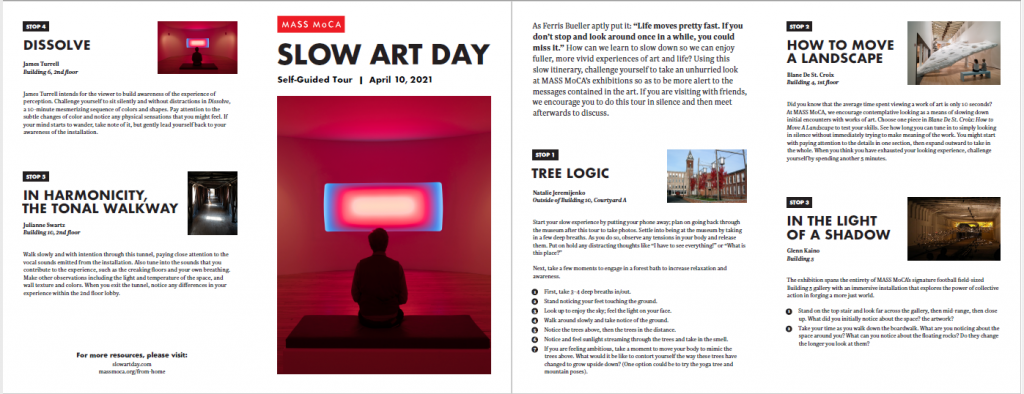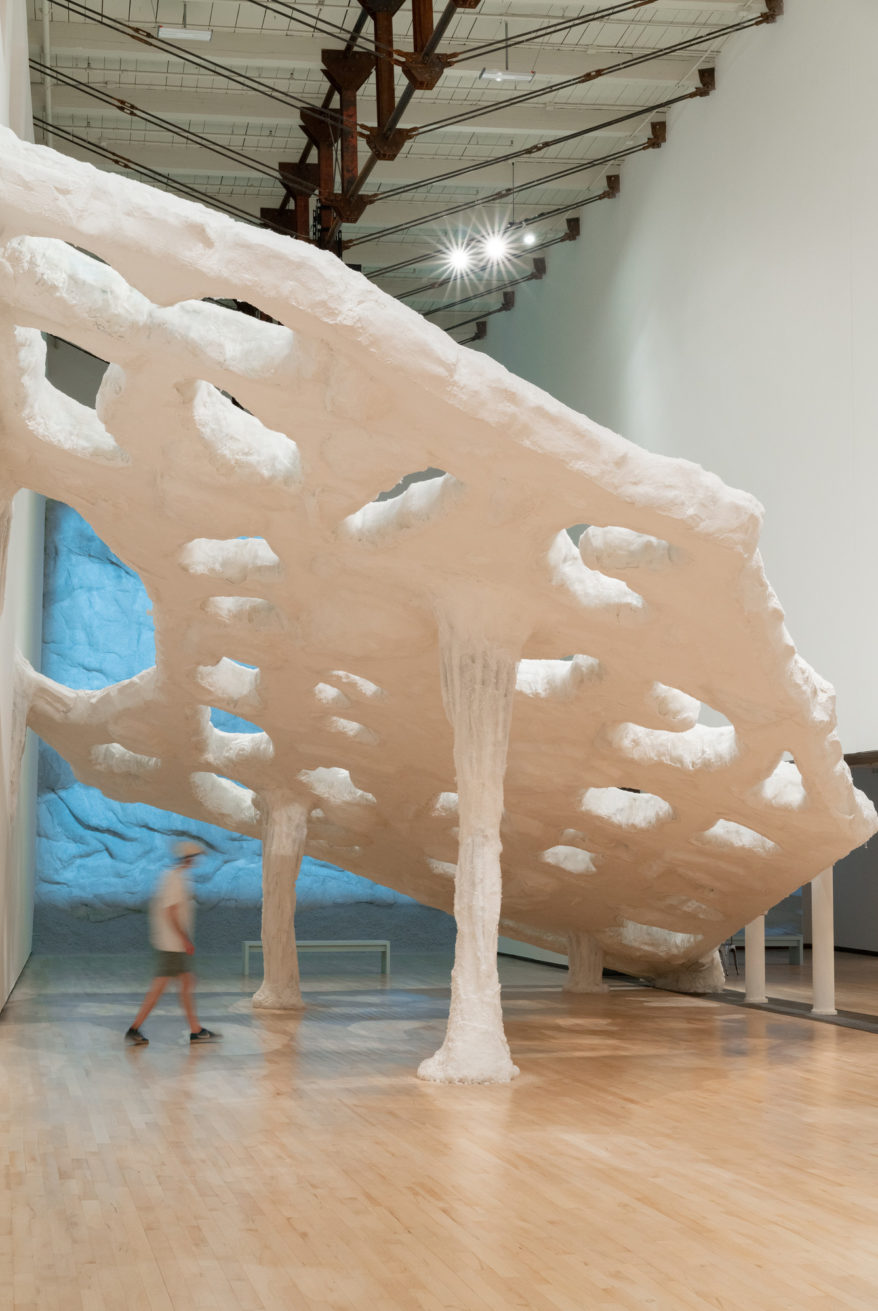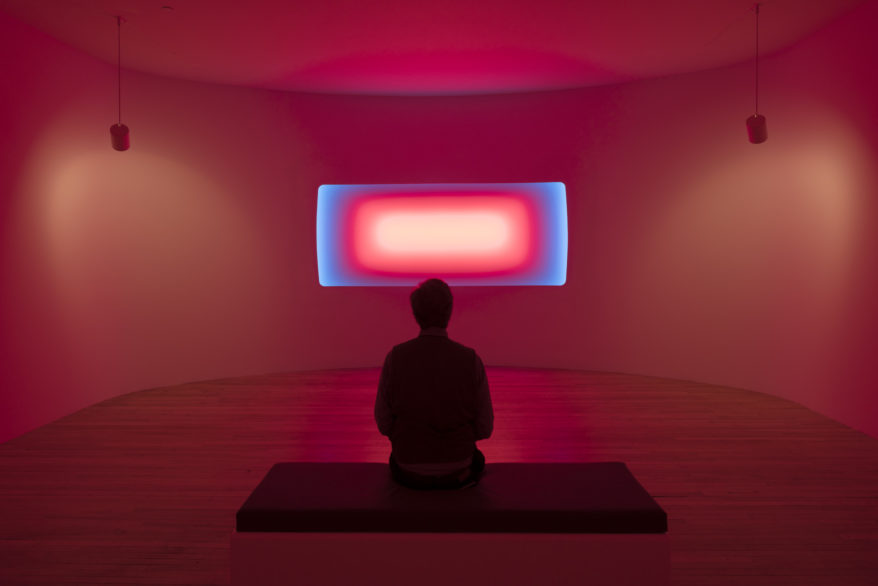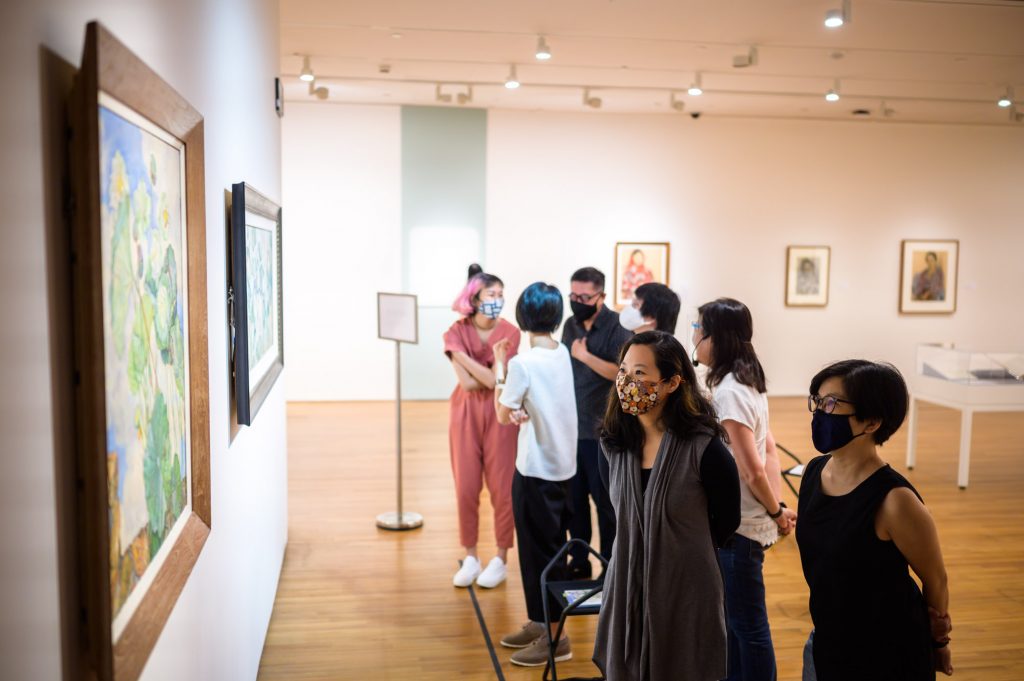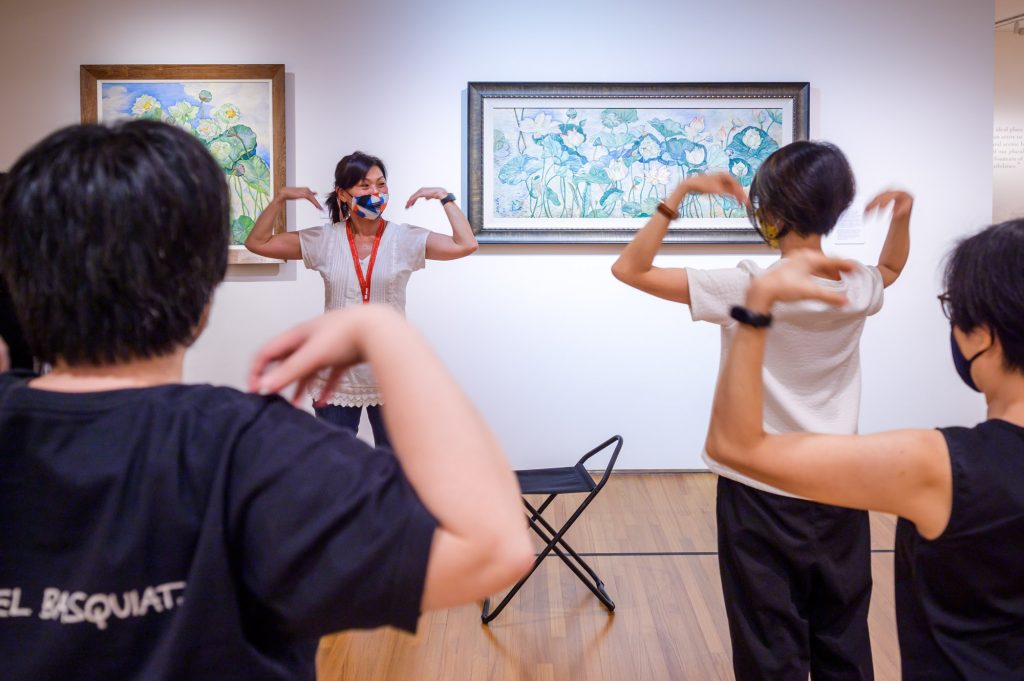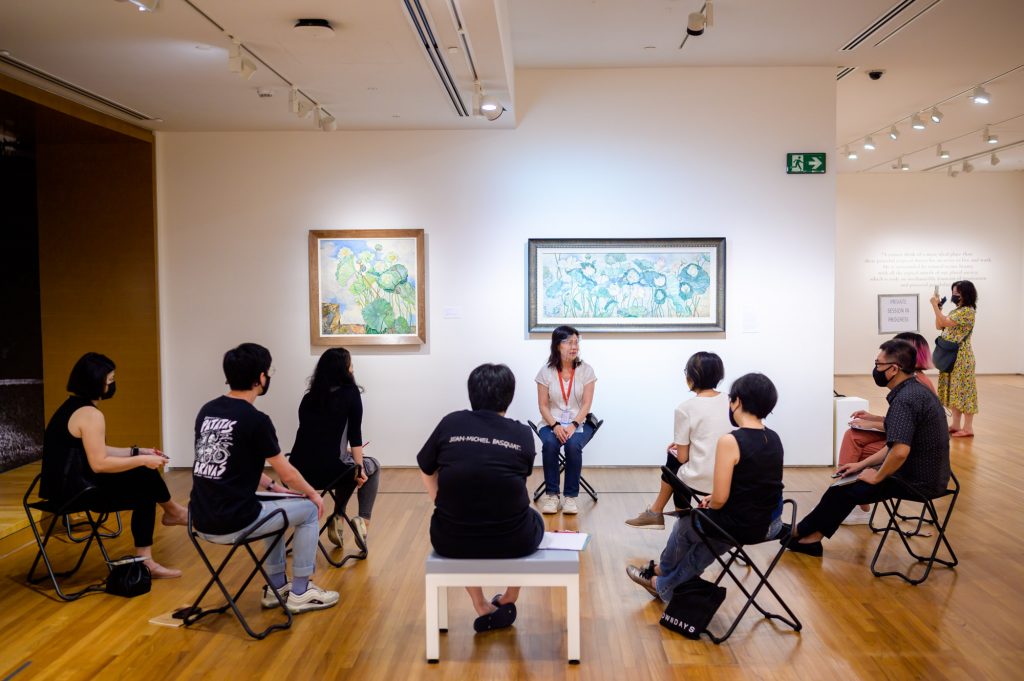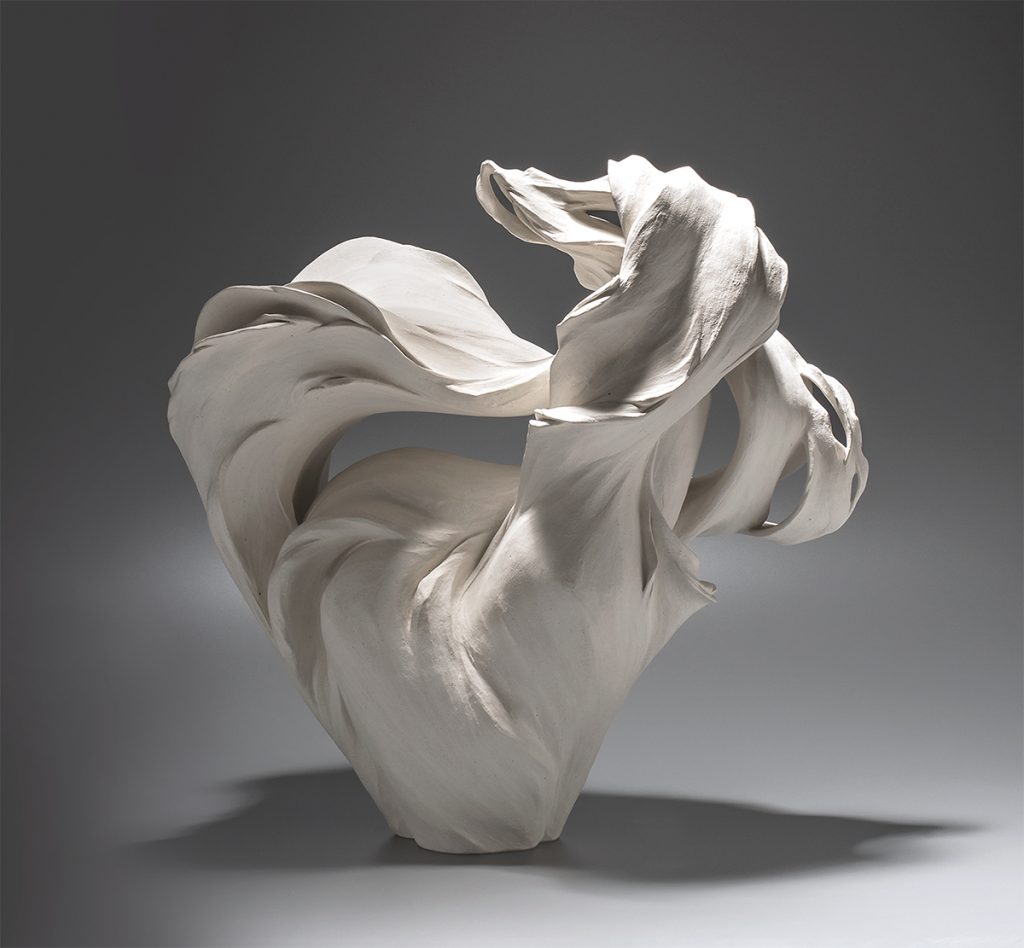For their 9th Slow Art Day, the Patricia & Philip Frost Art Museum at Florida International University, in Miami, Florida, invited participants to join them for a virtual guided meditation, a yoga session, and a close-looking art exercise.
The event was organized in memory of Helena Venero, a dedicated docent, volunteer and art lover who enthusiastically helped the Frost Art Museum host their first Slow Art Day. We never knew Helena, but we feel her spirit strongly, and are really touched that the Museum organized the event in her memory.
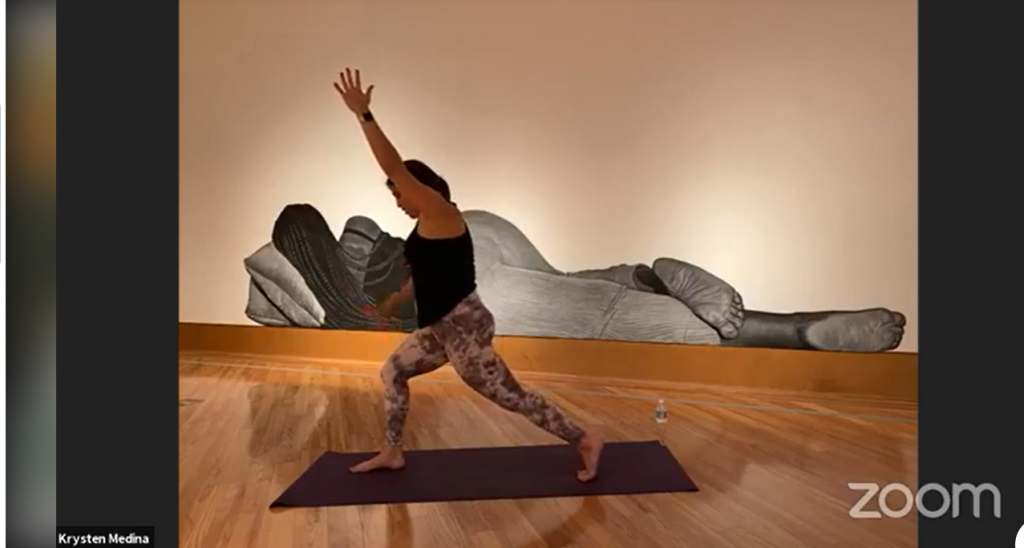
In the background: Chris Friday, “20 Feet Tall.” (Chalk on Arches paper, 2021)
On April 10, Victoria R. Gonzalez, a Health Educator, opened the event by encouraging participants to turn off their cellphones and join her in a guided meditation.
This prepped participants for the virtual yoga class that followed, which was led by Krysten Medina, a Prana Yoga instructor. With artwork in the background, she encouraged participants to give love and care to their bodies during the session as a grounding practice.
After yoga, participants were invited to complete a close-looking exercise using one of the below five works from the Gallery’s permanent collection.


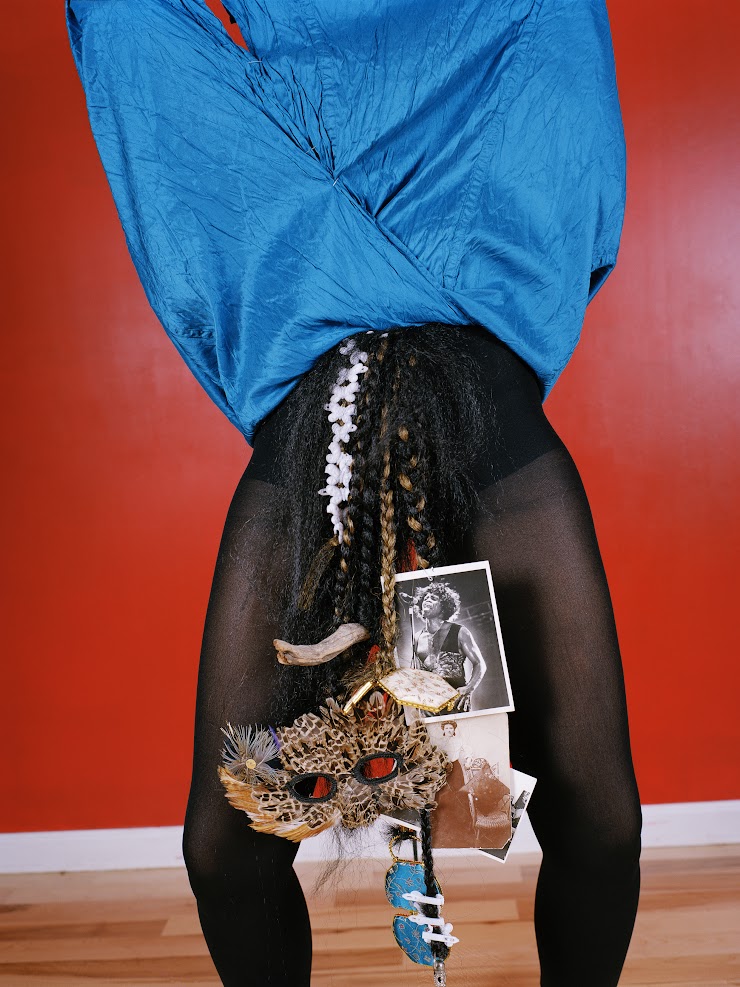

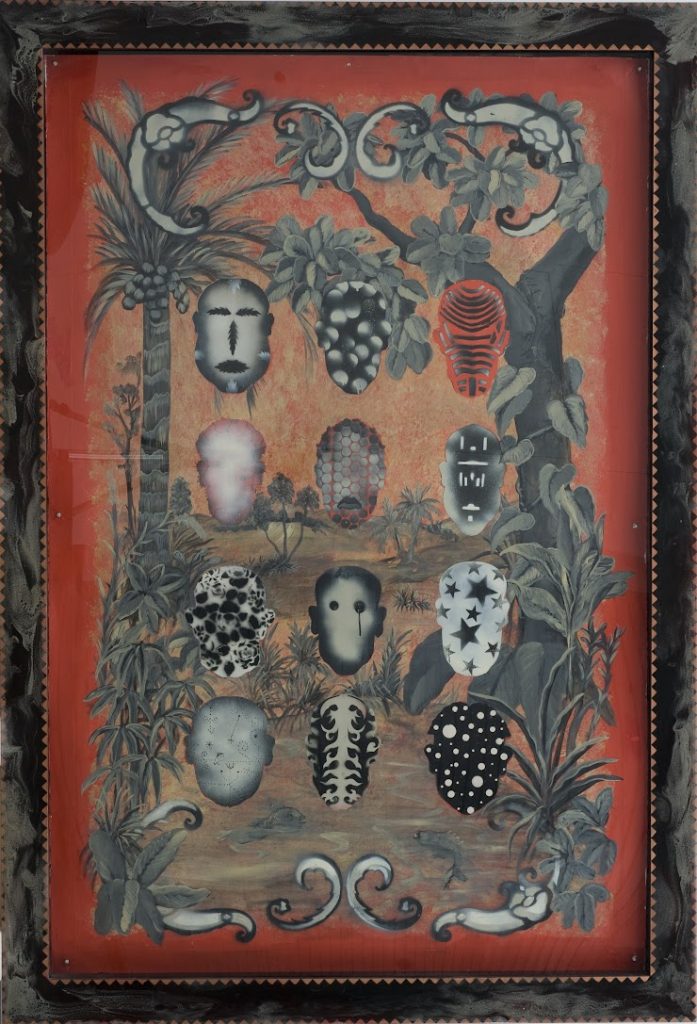
Participants chose one of the artworks, and spent 15 minutes looking slowly. They were then asked to ponder the following questions:
1. Describe the object.
2. What emotions, moods, ideas, or thoughts does the object convey or generate?
3. How has the maker/artist manipulated the materials and/or elements to convey or generate these emotions, moods, ideas, or thoughts?
4. What social, cultural, and historical factors might have influenced the maker/artist’s choices, and the object’s meaning?
5. What personal meaning or significance do you find in this object?
6. How would you compare this work to other artworks that you have seen? How is it similar and how is it different?
7. What other observations do you have?
Emily Afre, Education Specialist at the Gallery, thanked the Slow Art Day HQ team for “the opportunity to participate in another year of taking it slow.”
In turn, we would like to thank Emily and The Frost Art Museum for their long-term commitment to celebrating Slow Art Day, and for holding this year’s event in memory of someone who started their journey in Slow Art. We love being part of a global movement that helps people learn to look at and love art, all while slowing down in this fast-paced, multi-tasking world.
We can’t wait to see what the Patricia & Philip Frost Museum comes up with for their 10th Anniversary Slow Art Day in 2022.
Johanna, Jessica, Ashley, and Phyl
P.S. If you are interested in following the Frost Art Museum’s updates, here you can find their Facebook page.

